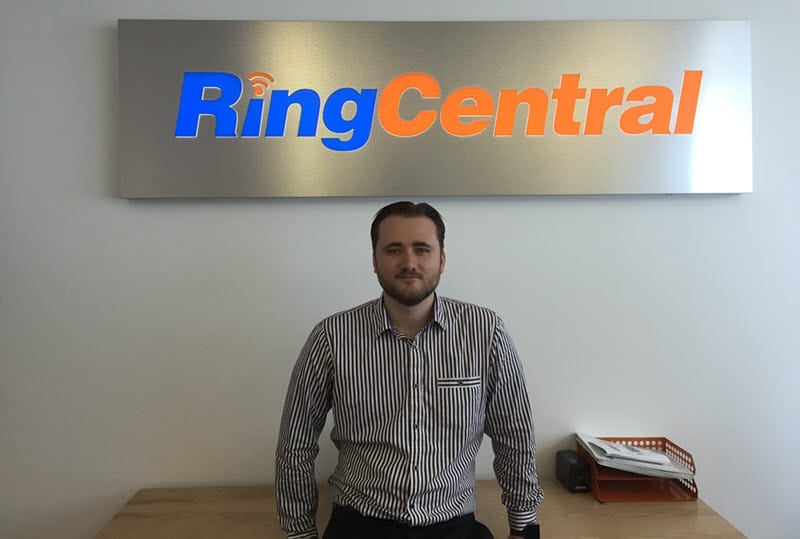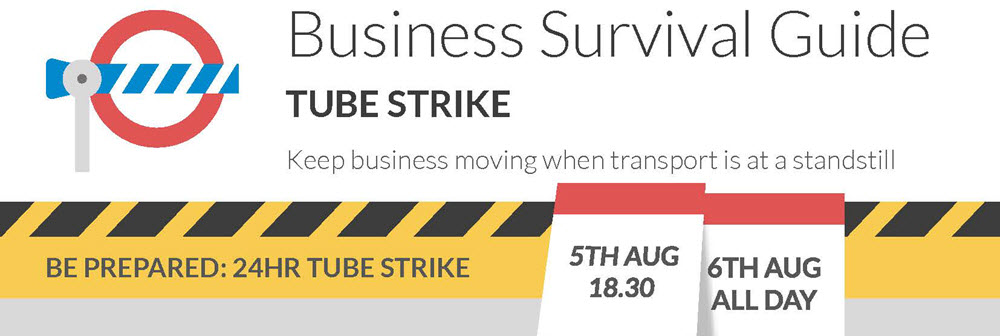
Last week I talked to Jim Payne about why people should switch to using new collaboration tools. He mentioned that they make his work easier and more comprehensible, and he also believes collaboration tools are the next evolution in the workforce.
In preparation of our upcoming Webinar, Does more tech equal better team collaboration?, this week I spoke with David Van Der Steen, Senior Manager of Product Marketing, and Webinar panelist, who gave me his thoughts on collaboration and how it is changing within the corporate environment.
What is your role at RingCentral?
I’m the Senior Manager of Product Marketing. I manage field marketing, which means that we handle competitive analysis, and we also handle field marketing and engagement with sales.
What is your favorite part about your job?
My favorite part about my job is how different each day is. We’re constantly working on a plethora of projects, and because of that, nothing is remotely like an assembly line. So each day I get to come in and tackle new things. Since the market and the industry are always changing, we’re more closely aligned with sales, every project that we do has some kind of new nuance to it.
When was there a time when collaboration helped you succeed on a project?
This happens day in and day out. Whenever we’re engaged with sales or any kind of field marketing, there’s heavy collaboration. There’s usually three, four, or anywhere north of five parties involved. Whether it’s someone from product, engineering, or sales, whenever sales is reaching out to a prospect and putting something together, like an on-site presentation, there will be an immense amount of collaboration. We have a lot of products in house that we use, but we use multiple technologies in order to collaborate every single day.
What types of tools do you use to collaborate?
There are two main collaboration tools I currently utilize. The first is Glip (soon to be RingCentral Teams), which we use for interacting with multiple people, tracking progress with the persistent chat, and sending over different versions of files. We collaborate heavily on PowerPoint, and we constantly update different versions using Glip. With the chat windows, you’re able to go back in time and see some of the different comments that have been added. It’s great because I can see a history and the progress that has been made throughout the day. By using Glip we can replace multiple outlets.
The second tool that I use is RingCentral Meetings. We have offices in Denver, here in California, and other places around the world, and when we are reviewing a PowerPoint or a deck, we can throw meetings up, and having the audio there helps bridge the gap between the offices.
How has collaboration changed in the last 10 years?
So I think collaboration has immensely changed in the last 10 years. One of the biggest revolutionary things we’ve had is screen sharing and video chat. Even though there’s nothing like working on a project with people in the same room, being able to view someone’s screen does a pretty good job of closing the gap of not having people there in person. The other part that’s really helped with collaboration is being able to access files and projects on any kind of device. I’m usually working on three different devices, and with the collaboration tools, I’m not tied to a single one.
How do you see a collaboration tool like Glip changing the way people conduct business?
There are a couple things that are really going to change the way people conduct business. One of the first things that it will help improve is the fact that a lot of other collaboration tools have a single instance of collaboration. With Glip and the project rooms, the project room will stand up by itself. What’s nice about that is that it’s a fixed, stationary area, and you can input messages, commentary, and include files too. Someone else can add, see a history of it, and have access to everything no matter who is online. In today’s world, we’re really creating a work-life balance, and life doesn’t stop. The benefit of this is that people in different time zones and on different work schedules are able to view the same content and be on the same page.
What do workforce collaboration applications replace?
Many times we supplement older methods that we use to communicate for other tasks. Some of the older methods are important, but they were designed for a specific mode of communication. People still use phones, but putting 10 people together on an audio call to discuss a project does not work. Only one person can speak at a time and there’s no history of what was said. So the problem is, we’ve taken older versions of communication methods, and through the lack of technology, we had to utilize outlets in a way that they were not designed for. Email is still useful, and will continue to be used, but it was not designed to be a holistic suite in terms of sharing versions of files, having conversation and chat menus set up. The problem is that we’ve defaulted to that and people end up getting 100 emails a day and are copied on things that they don’t need or don’t have a full picture of. It’s not necessarily replacing anything, but what we’ve done is designed a mode of communication that frees us from our limitations.
How are people making the transition from older applications to new ones?
There is system complimenting, where this platform works alongside of what companies already have. With adoption, as soon as you can show that something has value and once people become more comfortable with it, they will see that it will work better than current solutions, and over time, they will realize that it also has additional uses. All of these things are baby steps. It really is able to go hand in hand with current technology. I kind of attribute this to how text complimented voicemail. I’ve actually seen text messaging replace voicemail. Voicemail has just about gone away, and with Glip, we see the same sort of adoption. It’s a process.
What hobbies do you enjoy outside of work?
I have two kids, and they pretty much take up all of my hobbies, but I love it. I have a three-year-old daughter named Lauren and a six-week-old son named Brandon. I’d have to say though, the coolest thing about parenthood is being able to relive your childhood.
Please join us for our upcoming webinar on July 29 at 10:00 a.m. PT to hear David and his colleagues discuss the future of team collaboration.
Originally published Jul 20, 2015, updated Aug 11, 2020



